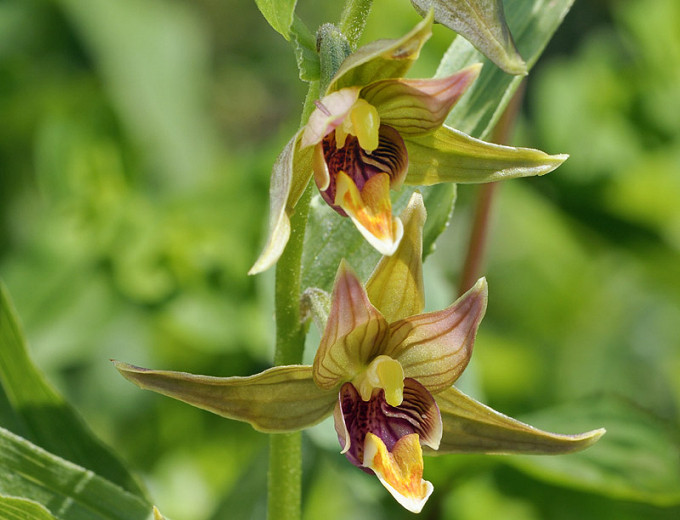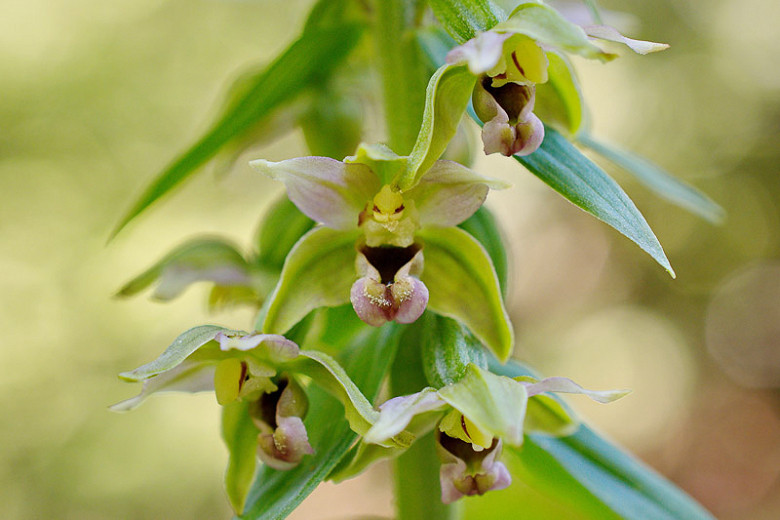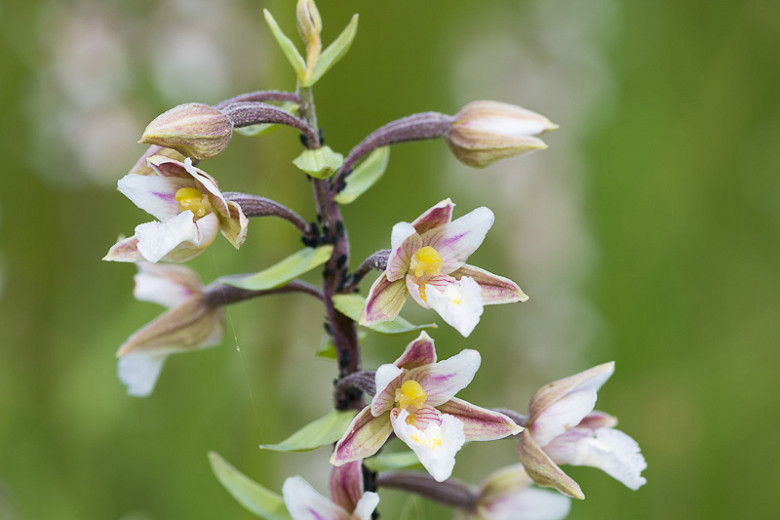Epipactis gigantea (Giant Helleborine)
Epipactis gigantea (Giant Helleborine) is a terrestrial orchid with loose spikes of up to 32 showy flowers, 1 in. across (3 cm), spread out along the stem. The sepals are green or greenish, with petals ranging from greenish to pink to rose, often with purple-brown or red markings or veins. Blooming for several weeks from mid-spring to mid-summer, the flowers are borne on erect stems bearing mid-green, lance-shaped leaves. They bloom in sequence up the stem. Approximately two months after flowering, the foliage fades, then disappear completely with the arrival of winter. The root system forms a dense spreading clump of rhizomes. Giant Helleborine will spread over time. Native to western North America, Giant Helleborine grows naturally in wet areas in a variety of habitats, including riverbanks, hot springs, and meadows. Ideal for a rock or woodland garden or in a wildflower meadow.
- Grows up to 12-30 in. tall (30-75 cm) and 6 in. wide (15 cm).
- Performs best in moist, humus-rich, leafy soil in partial shade.
- Lovely addition to beds and borders, cottage gardens, woodland gardens, rock gardens, and bog gardens, near ponds and streams. Can be grown in containers too.
- Virtually pest and disease free. Deer resistant
- Propagate by division in spring.
- Native to western North America from western Canada to central Mexico. This is one of the most abundant orchids of the Pacific coast of North America.
Requirements
| Hardiness | 5 – 10 |
|---|---|
| Climate Zones | 1, 1A, 1B, 2, 2A, 2B, 3, 3A, 3B, 4, 5, 6, 7, 8, 9, 10, 14, 15, 16, 17, 18, 19, 20, 21, 22, 23, 24 |
| Plant Type | Orchids, Perennials |
| Plant Family | Epipactis – Helleborines |
| Exposure | Partial Sun |
| Season of Interest | Spring (Mid,Late)Summer (Early,Mid) |
| Height | 1' – 3' (30cm – 90cm) |
| Spread | 4" – 6" (10cm – 15cm) |
| Spacing | 6″ (15cm) |
| Water Needs | High |
| Maintenance | Low |
| Soil Type | Chalk, Clay, Loam |
| Soil pH | Acid, Alkaline, Neutral |
| Soil Drainage | Poorly Drained |
| Characteristics | Showy |
| Native Plants | United States, California, Midwest, South Dakota, Pacific Northwest, Idaho, Oregon, Washington, Rocky Mountains, Colorado, Montana, Utah, Wyoming, Southwest, Nevada, Arizona, New Mexico, Oklahoma, Texas |
| Tolerance | Deer |
| Garden Uses | Beds and Borders, Bog Gardens, Patio and Containers, Ponds and Streams |
| Garden Styles | Gravel and Rock Garden, Informal and Cottage, Prairie and Meadow |


